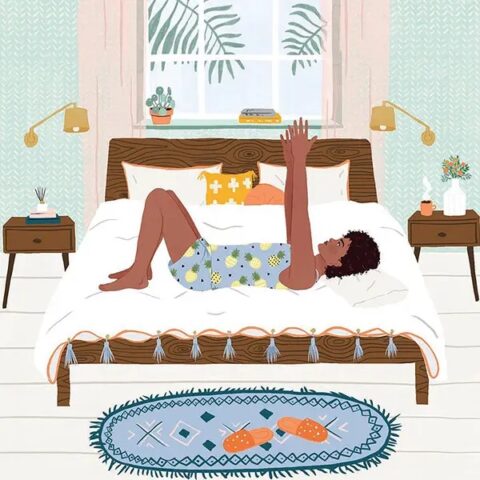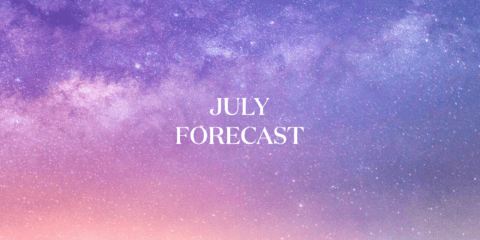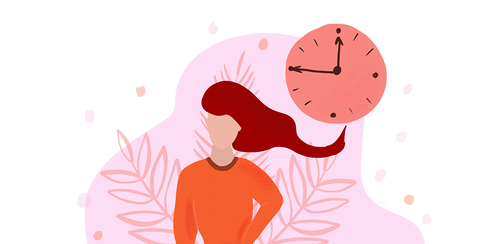Lost your conversational mojo? The pandemic and those all-pervasive smartphones could be to blame. Lucy Corry looks at how to amp up the quality of your chat.
Kat McCormack has always been good at talking. She grew up in a family where dinnertime debate was encouraged and her school reports noted that she “participates well in class discussion” (“that’s teacher code for ‘doesn’t shut up’,” she says). As a personal trainer, she learned a lot about talking to all sorts of people about all sorts of topics. Now, as a broadcaster for Rhema Media, she’s turned that combination of natural aptitude and professional skill into a career.
“A good conversation is all about building rapport, about having a genuine interest in the other person and wanting to know what makes them tick,” she says. “When people know that you care, then they’ll care about what you know.”
While Kat enjoys exercising her conversation muscles every day, many people aren’t so confident about having a chat. Our omnipresent smart phones may mean we’re never more than a click away from sending a text or voice message, but they’re also eroding the time and energy we have for real-life conversational connection. Add in the isolation of pandemic living and it’s not surprising that the thought of talking face-to-face freaks us out.
“I definitely think we’ve gotten out of practice and there’s a real sense of emotional fatigue,” Kat says. “We need to build our skills again.”
Conversation, which the Oxford Dictionary defines as “an informal talk involving a small group of people or only two”, is more important to overall wellbeing than we might realise. Connecting with people around us is as fundamental to our survival and existence as eating and breathing, says Wellington clinical psychologist Jacqui Maguire. We all need to feel seen, heard and understood – and conversation is a crucial part of making that happen.
“The really strong, reciprocal nature of conversation conveys ‘I see, you, I hear you, you matter to me’,” Jacqui says. “It’s all about filling your social cup. If you don’t have that, then you crave it.”
Connecting with another person triggers the release of oxytocin, the powerful “love drug” hormone. Oxytocin, usually most associated with sex, childbirth and breastfeeding, is a calming balm for our brains, Jacqui says.
“We need that calming in our day to counteract the cortisol and adrenaline that gets kicked off by anything that’s stressful or worrying or busy in our lives.”
Research by American psychology scholar Barbara Fredrickson has found that people need three positive emotions to every negative one every day to experience the benefits of that kind of connection. Jacqui says some people find small social interactions – a bit of banter with a barista, a chat with the neighbours – are enough of a boost if they happen regularly enough. For others, more meaningful conversations are required.
“A surface-level chat might give you joy, it might give you laughter or excitement and you might get some good feelings from it. A more intimate conversation, with someone that you know well might give you a sense of safety or trust. All of those positive feelings are important, they’re just different positive feelings.”
Ideally, we’d have a mix of those conversations in our daily lives, Jacqui says.
“I’d suggest you want a raft of people that you’re communicating with. Sometimes you just want a fun interaction with someone who doesn’t know all the things that are going on in your life.
“When I think about my own personal experience, I go to the same cafe every morning, either on my own or with my kids. I speak to the cafe owner, the barista and the same group of customers, every day. We chat for five minutes about the weather, or what’s going on in the news, or the crossword. Those conversations are fundamental to my day going well. I work on my own and I’m a stay-at-home mum; in many ways you could say I was quite isolated, so those conversations are a cornerstone for me. But I also have intimate relationships with my husband, my family and my friends, where I have deeper conversations.”
Experts say between 70 and 90 percent of communication is non-verbal: tone, body language, responsiveness and how much you ‘lean into’ a conversation. All these things are missing, or harder to read, in digital communication.
“That’s why we’ve seen such a decline in the quality of relationships over the last two and a half years,” Jacqui says. “We need practice.”
“Outstanding communication skills” tops the list of requirements for new police recruits in Aotearoa, followed by empathy for others. Since joining the police four years ago, Northland-based Constable Ellen Ao says she’s learned to talk to people in just about any situation.
“Conversation is how we get to learn about each other,” she says.
Ellen joined the police in 2018 after previously working as a project manager in the construction industry. She says being a police officer has strengthened her ability to ‘read’ people – and she gets plenty of chances to practise.
“I’m actually quite a shy person, but I’ve built up my confidence in communication (through being in the police). That doesn’t mean I have the confidence to go and solve every single problem, but I’ve learned how to understand people better.”
She says interpreting body language is critical to a positive outcome.
“It’s all about understanding where someone is coming from.”
Tough conversations of another kind are also part of the job for Anna Liumaihetau Darling. Many years spent working in HR in New Zealand and overseas means she’s well-practised at talking to people when they might feel uncomfortable, and she’s learned a lot along the way.
“Generally, I’m happy to chat away with people when I feel comfortable, but I’ve become more introverted over the years and I have to really dig deep for small talk. I played and worked in rugby for many years and I’ve found talking about it to be really useful when it comes to finding common ground.”
As the general manager of people experience at a tech company, Anna is no stranger to digital communication tools. But while they might be convenient, any important conversations have to be had face to face, she says.
“There’s a lot less room for ambiguity when you’re face to face, either in person or on video. It’s just so much easier for people to understand the tone, and to see how the other person is taking it.”
Her own conversational ease depends on the context, she says.
“If I’m at a conference, or a networking event, I’m like a deer in the headlights. Imposter syndrome kicks in hard and I get my phone out so I can pretend to be busy, when the truth is I don’t know what to say. But in a smaller group, I’m good.”
Anna says the sign of a balanced and engaged conversation is when both or all parties are engaging, sharing the load of talking and actively listening.
“In a work sense, you want everyone to come out with a shared sense of ‘this is what we discussed and these are the actions’. On a personal level, when I’m talking with my girlfriends it’s good when we’re all contributing and getting the same out of it, even when we’re just chewing the fat.”
ILLUSTRATION: GETTY








